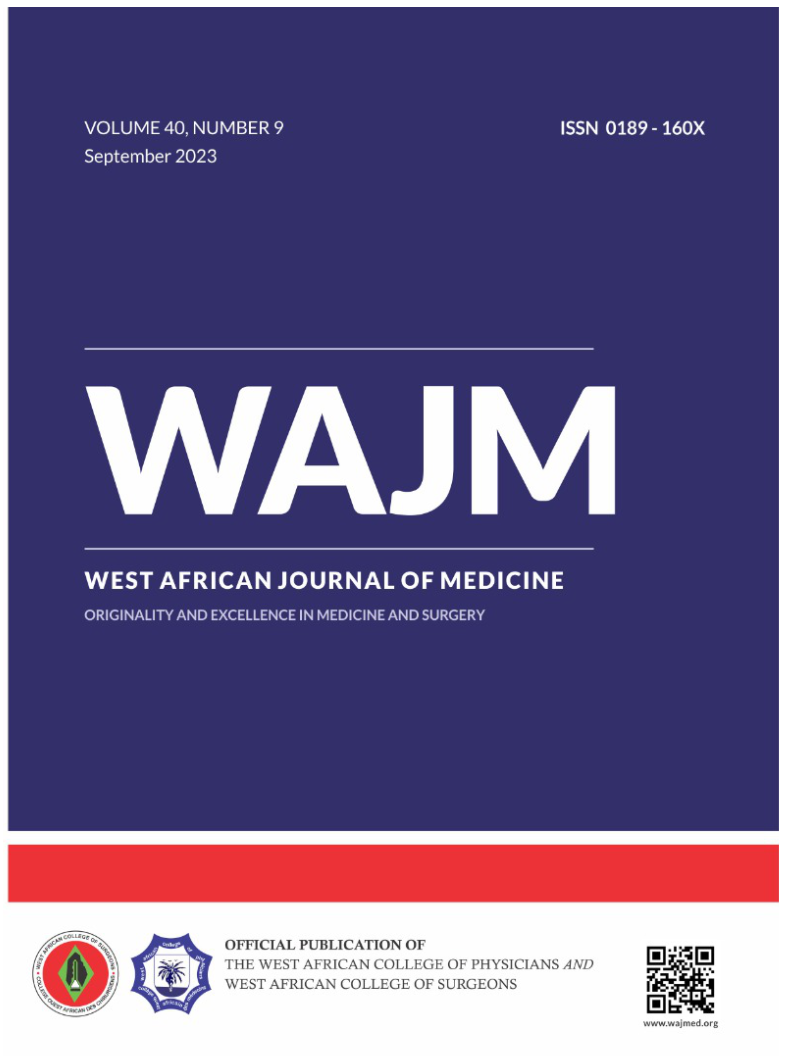ORIGINAL ARTICLE The Prevalence of Musculoskeletal Symptoms among Welders and Non-Welders in Ikenne, Ogun State, Nigeria: A Comparative Cross-Sectional Study
West Afr J Med. September 2023; 40 (9): 943-949
Keywords:
Musculoskeletal symptoms, Nigeria, Nordic Musculoskeletal Questionnaire, WeldersAbstract
Background: Musculoskeletal symptoms in welders may affect their health and quality of life. This study determined the prevalence of musculoskeletal symptoms among welders compared to non-welders and determined the body part(s) mostly affected.
Methodology: The study is a comparative cross-sectional study. 142 welders and 136 security officers in Ikenne local government area of Ogun State, Nigeria were included in the study. The Nordic Musculoskeletal Questionnaire (NMQ) was used to obtain information on the prevalence of musculoskeletal disorders (MSDs). Descriptive statistics methods were used to summarize the data. Chi-square bivariate analysis was conducted to test for associations between welders' occupational characteristics and the 12-month prevalence of back pain.
Results: The mean age of respondents was 36.8±13.9 years and 36.7±9.4 for non-welders. Two-fifth (40.8%) of the welders had less than 10 years of work experience. About half (50.7%) of them worked six days a week, and many (54.9%) worked more than eight hours daily. The prevalence of back pain was higher among welders (74.6%) than in security officers (33.8%). This finding was significant (P<0.001). Also, knee pain was more common among welders (31.7%) compared to security officers (16.2%). The 12-month prevalence of back pain among welders and control was 74.6% and 33.8% respectively and knee pain among welders and control was 31.7% and 16.2% respectively. Both were statistically significant (p=0.001). In the last seven days, back pain was present more among welders than in controls (50.0% Vs 26.5%).
Conclusion: The study shows a high prevalence of musculoskeletal symptoms among welders compared to non-welders. The lower back is the part of the body most affected. Training and health education of the workers on the negative effect of musculoskeletal symptoms on the body, and the right posture to adopt at work would go a long way in reducing the occurrence of these symptoms.


